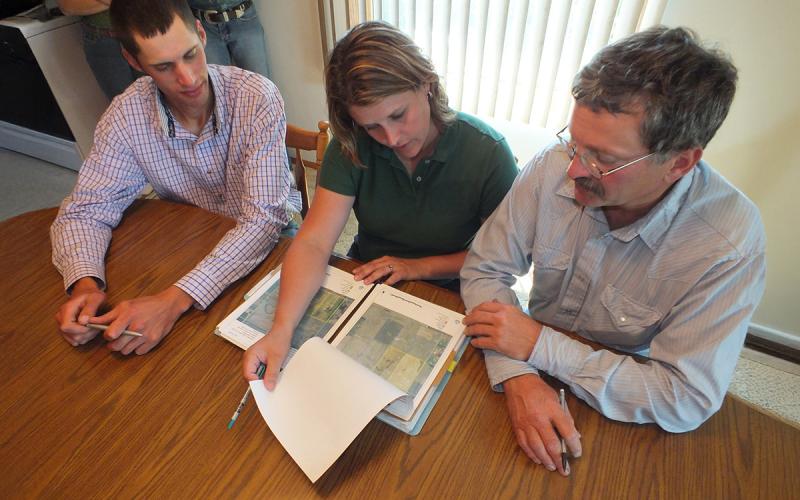
Original article by Taylor Grussing, former South Dakota State University (SDSU) Extension Cow-Calf Field Specialist. Updated by Olivia Amundson, former SDSU Extension Cow/Calf Field Specialist.
You can’t manage what you don’t measure, and good management practices begin by taking good records. Begin by finding records from the last 12 months, whether that’s in the Red Book or on a scratch pad in the tractor. Wherever it is, find it, sit down and start studying what was good and what areas might need changing going forward.
Feed Testing
With feed costs making up 60–70% of the expenses on ranches, it is not only important to pay attention to the quantity of feed on hand, but more so the quality of feed. Ranchers have done a fairly good job at minimizing feed costs, and it is to the point that we can’t cut costs anymore in this category. Yet feed, specifically forage quality can vary from year-to-year, even if it was harvested off the same field due to different growing and harvest conditions. If feed on-hand is of excellent quality, are cows being over fed? However, if quality is poor, more nutrient-dense forage or supplements may need to be purchased to create a balanced diet. I’d recommend spending the dollars to test forage and work with a nutritionist to design a balanced ration that will pay you back in cow performance and calf health come calving time.
Live Calves
Calving season comes and goes every year, and increasing the number of live calves can have a greater impact on the operation than cutting a few dollars on feed costs. At the Range Beef Cow Symposium in Watertown, South Dakota on Dec 12 and 13, Eric Mousel from University of Minnesota Extension reported financial records from the Minnesota Financial Standards Council and categorized ranches into profit groups in the top, middle and lower third of operations. Low profitability operations had 2.3% greater death loss and 5% fewer calves weaned than the high-profitability operations. That’s 7% difference in live calves that have the opportunity to be marketed. Focus on increasing live calves by altering pre-calving health protocols, supplementing extra colostrum at birth or better post-calving management. Simply maintaining more live calves to weaning will generate more income and increase production efficiency.
Pounds Per Cow Exposed
Weaning weights have not changed greatly in the last decade, even with adaptation of genetic technology. Therefore, the true measure of production efficiency needs be measured in pounds weaned per cow exposed. This will measure both calf performance and reproductive efficiency of the herd. Using the Reproductive Management Score Card, you can track calving, breeding and weaning data to determine how reproductive efficiency is affecting whole-herd profitability.
Marketing
The cattle cycle never behaves as expected, which creates challenging market scenarios for producers to constantly work in. Some folks call it a businessman market, and you can’t just show up to the sale barn and get the best prices anymore without doing a little homework. Therefore, take the time to study the cash and futures market, consult an economic specialist and determine when the best time is to market calves and cull cows. Implement communication between cow/calf producers and feed yards to deliver the type and kind of cattle desired. This may lead to changing future breeding and feeding programs, but if more profit is realized, it will be worth it in the long run.


